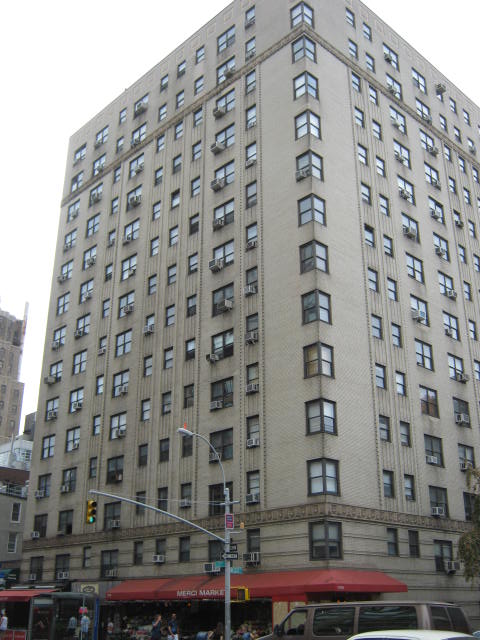
After years of patchwork repairs, Kensington House at 200 West 20th Street is replacing its parapets to prevent further leaks.
Short-term fixes rarely bring long-term relief, especially when it comes to building maintenance. Case in point: the Kensington House, a 195-unit co-op at 200 West 20th Street in Manhattan, which had been doing patchwork repairs for years in a futile attempt to stop a continuous string of leaks.
“We had performed some inspections and we couldn't quite figure out where the problem was,” says the building’s managing agent John Devall of Orsid Realty. “We had been doing interior repairs the entire time.” Still, the water infiltration continued.
It was assumed the leaks were coming from defective brickwork in the facade. RAND was hired to determine the cause of the leaks, and after a series of water tests we found that it wasn’t just the exterior wall that was a problem, but the parapets as well.
The problems with the parapets were serious: Not only were the bricks defective, but the counterflashing had been improperly installed and there was no waterproofing membrane in some areas. The board decided that continuing to do piecemeal repairs was not an effective solution and that a full replacement of the parapet was in order.
It was not an easy decision. Faced with the unexpected increase in the scope of work, which will cost an additional $200,000, the co-op had to put off a planned window replacement program. But given the residents’ frustration with ongoing leaks, the board realized they had to tackle the problem head on. “We didn't want to do a Band-Aid [fix] and come back to this three or five years from now and have the same sort of situation,” said board president Robert Dobruskin. “We made a decision not to put any more money into stopgap repairs.”
Fortunately in 2013 the co-op refinanced its mortgage for approximately $2 million to help pay for upcoming Local Law 11/98 work, so it was in a strong position to add the parapet replacement work as part of the repair program.
Because of the age of the building, which was constructed in 1937, one of the challenges has been matching the replacement brick with the original decorative brick to maintain the look and feel of the building’s Art Deco design. Because the facade has not been cleaned in a while, we’ve done a series of test patches with a cleaning product on the bricks and terra cotta to see what the original brick looks like.
Construction work, performed by Skyline Restoration, began last month, and is scheduled to be completed in late spring after a winter shutdown. Both the Board and RAND are confident that the full-scale repair program offers the best long-term solution to preventing further water penetration.
For more on this project, see the article in Habitat magazine.
Michael Larkin is a Senior Structural Engineer and partner at RAND.
